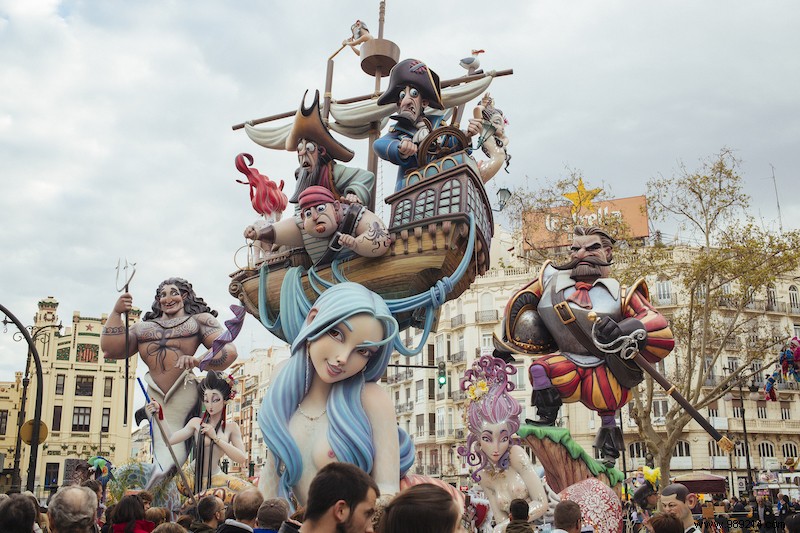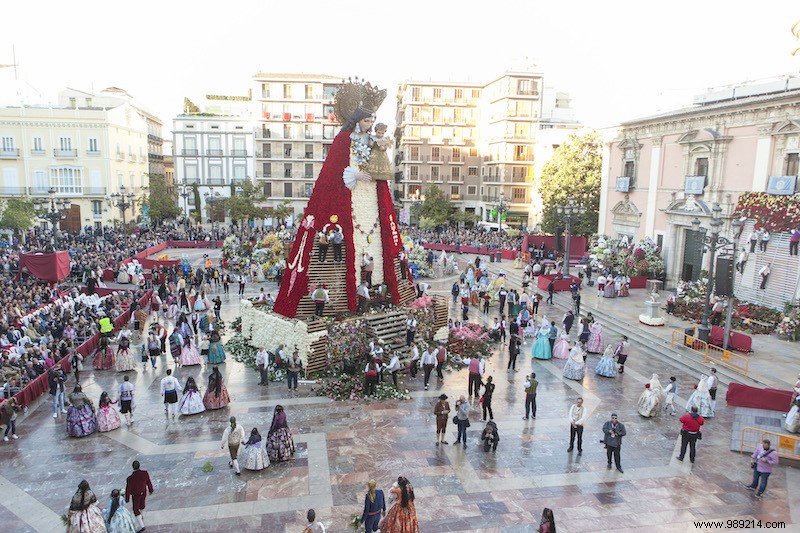Las Fallas, the largest Valencian street festival, a UNESCO World Heritage Site since 2016, has returned after two years with the usual festivities such as the mascletaes, the offering, open air dancing and impressive fireworks displays. The festival is officially opened during 'La Crida', with the Fallas fuse being lit on the last Sunday of February. The culmination of the street festival takes place from March 15 to 19, with virtually all the city's streets filled with art, humor and satire. Are you enjoying it?

To discover the origins of this celebration, we have to go back hundreds of years. Every year on March 19, Saint Joseph, the patron saint of carpenters, was celebrated. The town's carpenters took old remains from their workshops and burned them. This marked the end of winter and thus spring was welcomed. The festival has undergone quite a metamorphosis over the years, without losing any of its traditions. The bonfires are created by the burning of the Fallas, monuments that are set up every March 15 in the streets of the city and the province of Valencia. They are authentic works of art, created by the guild of fallero artists, who are joined by others such as musicians, pyrotechnicians, costume designers and florists. They are all true craftsmen and they are part of the soul of the festival.

After a year without a festival in Las Fallas and a year with a minimum program in September to burn the monuments, the great festival of Valencia rises from the ashes. The Fallas are once again shining on the city streets with more joy than ever. This year, covid safety measures will be enforced. The use of face masks will be mandatory for all indoor activities and outdoor manifestations where the safety distance cannot be guaranteed. Discover the full programme.

One of the most spectacular events of Las Fallas is the “mascletà”, which returns to Plaza del Ayuntamiento every day until March 19 at 2 pm. Thrill-seekers should not miss the fireworks that are set off every evening in the Turia Garden. During the “plantá” in the nights of 15 and 16 March, the monuments end up in the streets. A total of 800 works of art will be spread over 400 locations in the city. The Fallas are classified into different categories according to their complexity, size and originality. They are all unique, but the most spectacular are located in the old town, Ciutat Vella and the Ruzafa and Gran Vía districts. It is best to book a guided tour or a Fallas tour to see the most spectacular monuments while they tell you about the details and traditions. The festive calendar continues with the awards ceremony, which will take place on the 16th and 17th, when the Fallas committees receive their awards in the town hall, accompanied by music bands.

Then follows the most exciting event:the flower offering. Every March 17 and 18, the sacrifice is made to the Virgen de los Desamparados, the patron saint of València. The falleros dress in their best clothes, the most traditional costumes, and walk the streets of Valencia carrying bouquets to the rhythm of the music of local bands. The procession ends in Plaza de la Virgen, where a huge statue of the patron saint is erected and her cloak is covered with flowers. On March 19, with the “Cremà” comes the closing act of Las Fallas, a special event in which the monuments collapse under the flames of the bonfires. It starts at 8 o'clock in the evening with the small Fallas and at 11 o'clock with the large one. A little later, the winners of the first prizes in both categories and those of the town hall will be announced. With the “cremà”, the flames, accompanied by fireworks, remove the remains of the Fallas of the current year and start those of 2023, in a very magical innovative exercise. A spectacle that you must experience at least once in your life.
Credits:Visit Valencia
Discover all information about Las Fallas at visitvalencia.com.